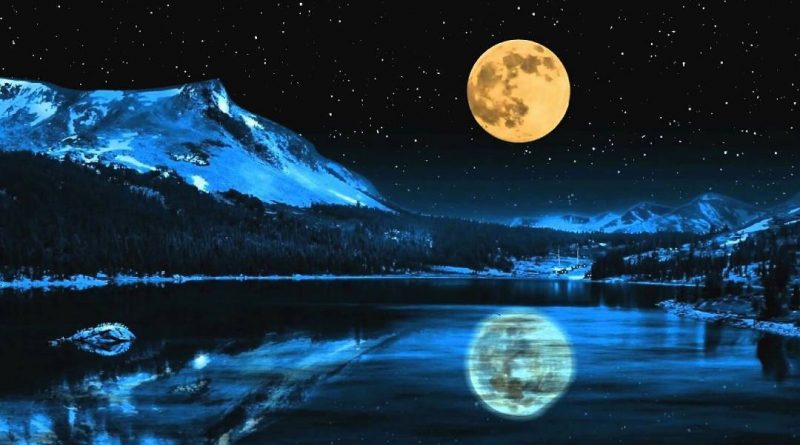The first of two March 2018 full moons falls on the night of March 1-2, 2018. The second full moon of this calendar month will happen on March 31, 2018. By popular acclaim, the second of two full moons to occur in one calendar month is commonly called a Blue Moon.
This Full Moon spectacle occurs when the earth comes directly between the sun and the moon. It happens every 29 and a half days, and each month’s full moon has a special name.
This is because Native American tribes kept track of the months of the year by the lunar calendar.
When is the next full moon in 2018?
FEBRUARY 2018: No full moon
The last time this happened was in 1999, and it occurs about four times-a-century.
February is the only month when this is possible because, at 28 or 29 days, it’s shorter than the lunar cycle.
MARCH 2018: Worm Moon
This particular spectacle has many names – and can also be known as the Sap Moon, Crow Moon or Lenten Moon.
In 2018, it will fall on March 2 – and shine its brightest at 12.51am.
MARCH 2018: Pink Moon
Despite its name, don’t be expecting a pink moon. This spectacle is named after the wildflowers which grow in the United States and Canada in the spring.
It’s also known as the Egg Moon or Fish Moon, because of the shad fish that swim upstream at this time of year.
This moon is particularly important because it is used to fix the date of Easter, which falls on the first Sunday after the Pink Moon, and marks the start of the Jewish Passover.
In 2018, the pink moon rises at 2.37pm on March 31 – and Easter Sunday falls on April 1.
The First Full Moon
For North America and Hawaii, that means the moon turns precisely full this evening – on March 1, 2018 – at 20:51 (8:51 p.m.) AST, 19:51 (7:51 p.m.) EST, 18:51 (6:51 p.m.) CST, 17:51 (5:51 p.m.) MST, 16:51 (4:51 p.m.) PST, 15:51 (3:51 p.m) AKST and 14:51 (2:51 p.m.) HST.
No matter where you live worldwide, however, expect to see a full-looking moon lighting up the nightime from dusk until dawn. Because the moon stays more or less opposite the sun throughout the night tonight, look for the moon to rise in the east around sunset, climb highest up for the night around midnight and to set in the west around sunset.
For both the Northern and Southern Hemispheres, the first full moon of March 2018 presents the third of three full moons to occur between The December 2017 solstice and the March 2018 equinox. For the Northern Hemisphere, the first full moon of March showcases the final full moon of winter; for the Southern Hemisphere, it’s the last full moon of summer.
The Second Full Moon
We had a Blue Moon on January 31, 2018. It was a supermoon, too, and underwent a total eclipse photos here. But another Blue Moon is coming right up. They’re both Blue Moons by the monthly definition of the term: the second of two full moons to fall within a single calendar month. The second (and last) Blue Moon of 2018 will be on March 31. We haven’t had a year with two Blue Moons since 1999 and won’t have one again until January and March, 2037.
The second of these two March 2018 full moons will usher in the first full moon of spring for the Northern Hemisphere. In the Southern Hemisphere, this Blue Moon on March 31, 2018, will stage the first full moon of autumn.
For the Southern Hemisphere, the Blue Moon – the the second full moon of March 2018 – will also be their Harvest Moon, the closest full moon to the autumn equinox.
But wherever you may be on this night – the night of March 1-2, 2018 – enjoy the first of two March 2018 full moons and the final full moon of the season.












